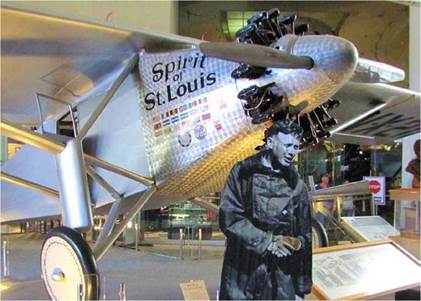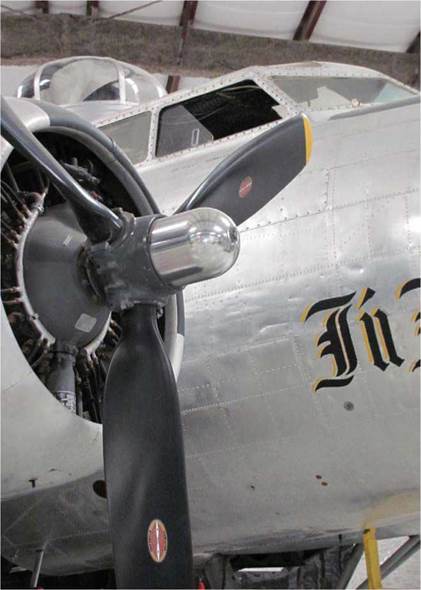Constant-speed Propellers
The constant-speed propeller was patented in 1924, in the UK, by Gloster/Hele/Shaw/Beacham. Flight-testing was carried out on a Gloster Grebe in 1926-7. The propeller built of compressed wood was later produced by Rotol, now Dowty Rotol in the UK. Although the constant-speed prop was developed in the UK, the American built Grumman FF-1 is believed to be the first production aircraft to use a constant – speed prop. This was a single-engine biplane fighter, which entered service with the USAAF in late 1931.
It was to be another ten years before the Royal Air Force operated aircraft with constant-speed propellers. In 1929, another propeller manufacturer known then as Hamilton Aero, in the USA, merged with Standard Steel to form the now well-known Hamilton Standard company. On 10 June 1999,
|
A replica of Lindbergh’s Ryan NYP with a ground adjustable prop, located in the San Diego Air & Space Museum, Ca. |
Hamilton Standard’s parent company United Technologies, acquired the Sundstrand Corporation merging it with Hamilton Standard to form Hamilton Sundstrand. During the 1930s, Hamilton Standard designed a constant-speed, three-blade prop made from a light alloy, the pitch-change mechanism being hydraulically operated. This was first used on the Boeing 247D, to become the first modern airliner to use a constant-speed prop, in 1934. The three-blade Hamilton Standard prop was powered by a geared Pratt & Whitney Wasp radial engine of 550 BHP (410 kW). This prop replaced a direct drive Wasp turning either a two-blade or a three-blade variable-pitch propeller found on earlier models of the Boeing 247. The improved performance given by the constant-speed propeller enabled the Boeing 247D to become the first airliner capable of climbing on one engine.
|
|
A constant-speed propeller mounted on a Boeing B-17G Flying
Fortress. The chrome dome on the hub houses the constant-
speed unit piston. Pima Air & Space Museum, Tucson, Ar.
Hamilton Standard invented the ‘paddle blade prop’ circa 1940, to produce greater static thrust for better take-off performance. Paddle blade props have broad constant chords, usually with blunt tips on modern propellers. Hamilton Standard also introduced the ‘Hydromatic’ feathering propeller, which went into service in 1936, and during World War 2, Hamilton Standard went on to make propellers for three quarters of the allied aircraft.
The first company in the USA to manufacture propellers was the Regina Gibson Company in 1909, which was placed in the hands of the Canadian engineer Wallace R. Turnbull. An alternative to the hydraulic constant-speed unit is the electrically operated system, first designed by Turnbull in 1925 and followed by flight-testing in 1927. Curtiss-Wright in the USA licensed and improved on Turnbull’s design and made aircraft propellers with electrically operated pitch change mechanisms. The Curtiss Electric propeller was very popular during WW II, being used on many types of American built single-engine fighters and light twin-engine bombers. Because of necessity for high-performance aircraft, the constant-speed propeller is assured a long and very productive future.













